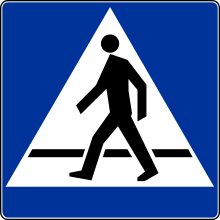One of the greatest joys of childhood was total immersion in play. With imagination, a box of Lego was the portal to a world of creativity, time being the only constraint. Today's Lego is moving more and more towards verisimilitude with an ever greater range of shaped pieces. For me, the lack accuracy - and of little Lego people (introduced in the late 1970s) was not a problem; I'd place a 1x1 cylindrical brick on top of a 1x1 square brick, and that would represent a human being - a driver, pilot, engineer or passenger. These were the Lego people that inhabited my world. They'd be named (or numbered) for the letter or number on the square brick. And their heads would be blue, red, white or yellow.
My Lego modelling output did not look remotely like the real thing (for instance my Apollo Saturn V rocket being square rather than cylindrical in cross section), but this did not matter - in my imagination, the rocket was the same shape as the original. The colours of 1960s Lego bricks - white, red, blue, yellow and clear, with grey base boards - these are the colours of my childhood.
The specific pieces of Lego that trigger the strongest qualia memories are the ones that cannot form anything other than themselves - the national flag set, the road sign set and the petrol station set.
Below: one winter's day, with fresh snow on the streets, a crisp frost and a blue sky, I walked past the Radisson SAS (as was then) hotel on ulica Grzybowska in Warsaw; outside fluttered the flags of Denmark, Sweden and Norway - and all of a sudden the Lego flag set flashed back to me.
Below: the Shell service station set bought for me by my parents didn't include the tanker truck, but I recall the little yellow petrol pumps and the Shell sign.
Another set that often sparks qualia memories is the road signs, below, which in the mid-1960s were still a bit exotic, being the continental-style signs that were being introduced onto British roads from 1 January 1965.
British road signs from before that date themselves trigger strong pangs of nostalgia (below).
Outside our house on Cleveland Road, there was a roundabout sign like the one above, well into the 1980s.
One Lego road sign that I recall from the set (suggesting it was a continental European traffic-sign set) was this sign, left, informing drivers of a pedestrian crossing one (informing rather than warning - that's the universally used pedestrian-in-a-red-triangle sign). This does not exist in the UK, probably because of Belisha beacons, which serve the same purpose.This time last year:
Onto the frozen pond
Mid-Jan pictorial round-up
This time seven years ago:
UK migration and the NHS
This time 10 years ago:
Miserable depths of winter
This time 11 years ago:
From - a short story (Part 1)
This time 12 years ago:
A month until Lent starts
This time 13 years ago:
World's biggest airliner over Poland
This time 14 years ago:
More pre-Lenten thoughts











No comments:
Post a Comment